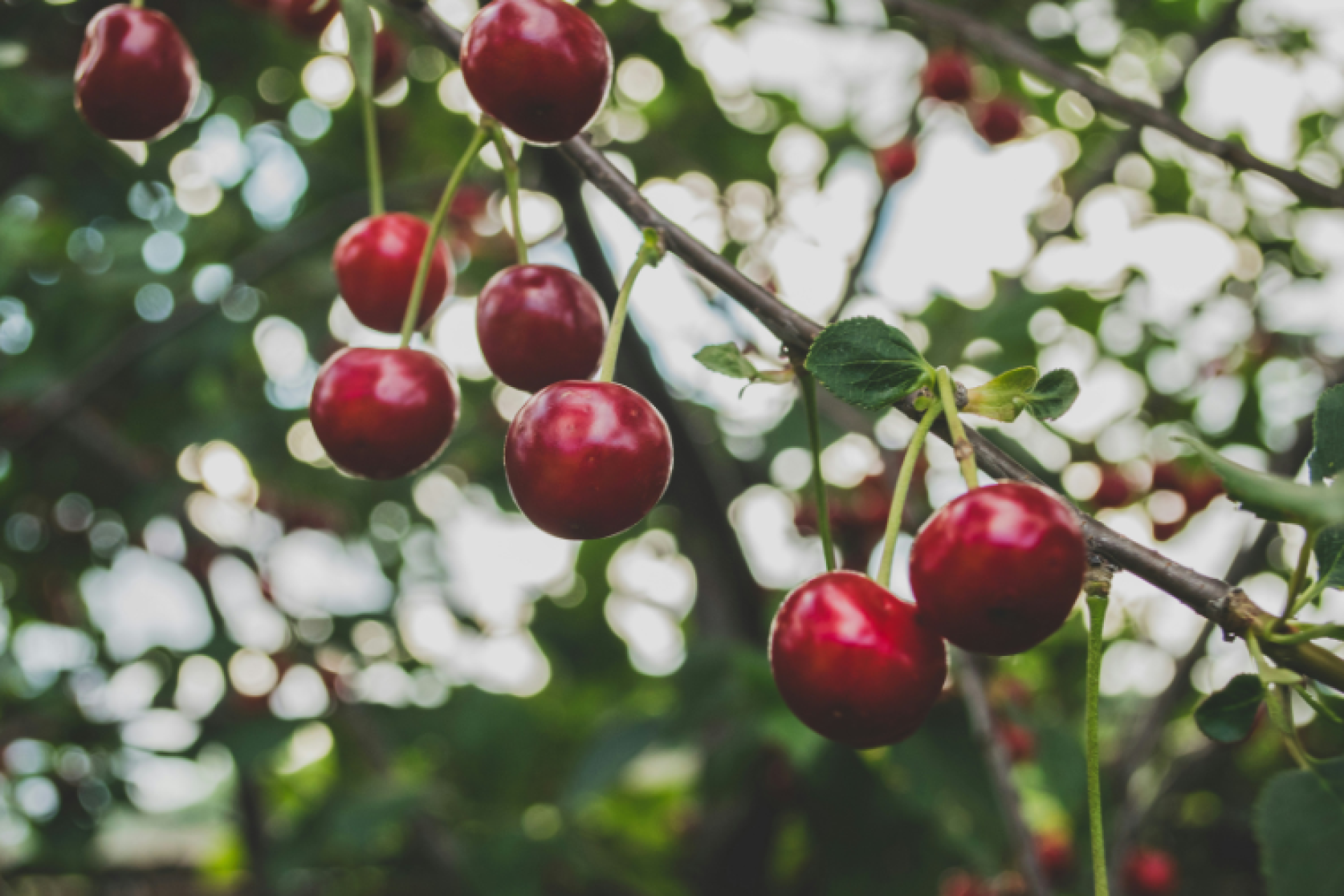You are here
Be A Better Gardener: Cherry Trees
Be A Better Gardener: Cherry Trees
by Thomas Christopher
I like the idea of a “low maintenance” garden, so long as it’s also beautiful and wholesome for people, wildlife, and the environment. If I ever encounter such a unicorn, I will immediately fall to my knees in awe. In the meantime, though, I try to minimize the work involved in keeping my overly elaborate, too-big garden functioning.
To do that without a regime of synthetic chemicals involves understanding the processes at work there. Last week, I was reminded of this fact during a lecture by a young horticulturist about nurturing wildlife in the garden. She showed a photograph of a chickadee with a caterpillar in its beak and told the audience that it takes approximately six thousand such catches to raise a nest full of chicks to maturity. And, the speaker added, a pair of chickadees may raise more than one clutch of chicks in a single growing season.
My initial reaction was admiration for the songbirds’ parenting instinct. Then the penny dropped and I realized why I had almost lost my ‘North Star’ cherry tree to a plague of fall cankerworm caterpillars last spring.
I planted this dwarf tree in one corner of my vegetable garden a decade ago. It has grown to a height of 8 feet, since then and the summer before last (2023) the tree bore its first significant crop of fruit. In fact, by early June of that year, it was covered with burgeoning fruits. In previous years, I’d let the birds make off with the handful of fruit the tree bore, but in 2023 I was determined that I should enjoy the harvest. So I covered the tree with black plastic netting to exclude the birds.
The cherries were almost ready for picking when I went away for a week. When I returned, they were all – ALL – gone. I blamed some Houdini-like flock of birds until my wife, an environmental scientist who prefers to base her conclusions on facts, pointed out a pile of cherry pit-filled bear scat nearby.
My wife’s conclusion was confirmed when a large black bear began visiting our yard every three weeks or so, presumably to check on the progress of the garden’s other crops. I’d yell at the bear while restraining our dog, and it would lope off. Apparently, it wasn’t interested in summer greens or tomatoes. Just to be safe though, in the spring of 2024, I surrounded the garden with a three-strand electric fence powered by an extra-high-voltage charger. After all, if the bear became accustomed to finding food in my garden, sooner or later it would transfer this behavior to someone else’s plot, and that would most likely end badly for the bear.
However, in the interest of low maintenance, I left the bird netting in place. Why take it down just to replace it the next June?
In excluding the birds permanently, I betrayed a disastrous ignorance of the natural processes involved in the cherry tree’s life cycle. In May of last year, a horde of inch-long, brownish-green caterpillars with a black strip down their backs attacked the tree. By the time I spotted them, they had eaten all the emerging leaves and the flowers. I sprayed the tree with Spinosad, a natural insecticide produced by a soil bacterium, and the caterpillars disappeared. But the damage was done – much of the tree’s branches had died and even with careful pruning it will take years to recover.
What I didn’t think about, until I attended that horticulturist’s lecture, was that I saw no infestation of fall cankerworms in other trees nearby, even though cankerworms attack a wide range of hardwoods. As I looked at the image of that chickadee, however, I realized that by banishing the birds I had prevented them from picking the caterpillars off my little tree as they did the others nearby. I had disarmed the natural checks and balances and deprived some songbird nestlings of a treat.
I’ve removed the netting from the cherry tree, although I will probably replace it for a couple of weeks as the fruit ripens when and if the tree recovers and bears again. In the meantime, I’ve learned a lesson. The best way to reduce maintenance in my garden is to study and understand the lives of not only my plants but also the wildlife and even the weeds. In this case, knowledge truly is power. Or at least a passport to lower maintenance.
Be-a-Better-Gardener is a community service of Berkshire Botanical Garden, located in Stockbridge, Mass. Its mission, to provide knowledge of gardening and the environment through a diverse range of classes and programs, informs and inspires thousands of students and visitors each year. Thomas Christopher is a volunteer at Berkshire Botanical Garden and is the author or co-author of more than a dozen books, including Nature into Art and The Gardens of Wave Hill (Timber Press, 2019). He is the 2021 Garden Club of America's National Medalist for Literature, a distinction reserved to recognize those who have left a profound and lasting impact on issues that are most important to the GCA. Christopher’s companion broadcast to this column, Growing Greener, streams on WESUFM.org, Pacifica Radio and NPR and is available at berkshirebotanical.org/growinggreener.
Help Our Garden Grow!
Your donation helps us to educate and inspire visitors of all ages on the art and science of gardening and the preservation of our environment.
All Donations are 100 percent tax deductible.


